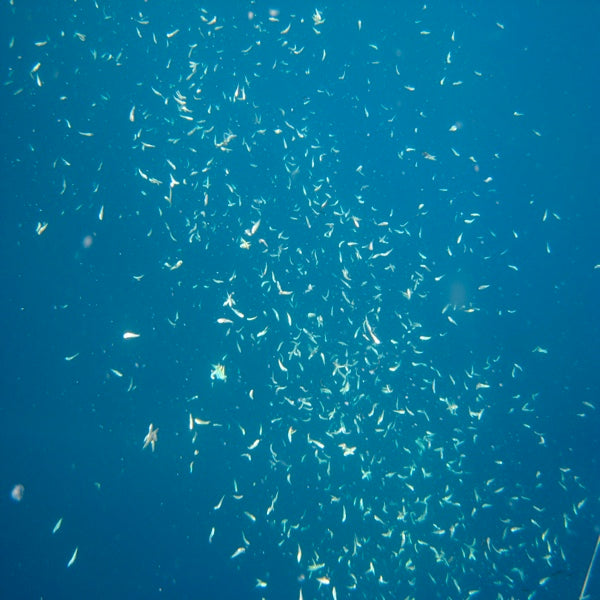
Attracting Fish - How to Use Chum and Flashers
Attracting Fish - How to Use Chum and Flashers
The art of attracting fish can certainly be a challenge, but it really depends on the situation. Sometimes when we chum, we are trying to get roaming bluewater species to come to the area we are diving in and stay there. Sometimes we chum to bring grouper out of their holes on the bottom to make them easier to shoot. A lot of the time when we chum, we are on spots that already are fishy and we are just trying to call the fish up to a more shootable depth. Deep shipwrecks or large structure are great examples of a situation where you may need some assistance in getting fish higher in the water column.The best chance you have go bringing them in is by appealing to their stomach with chum or flashers.
Deploying Chum
General Chum
Chum appeals to several of a fish's senses if it is deployed properly. It can be made up of fish, squid, octopus, minnows, and is usually chunked or ground. It can be fresh or frozen. Different areas have different kinds of baits that it is more effective to chum with based on the kinds of baitfish that most commonly live around each the area you're diving. Ask local tackle shops what kind of chum works best for whatever species you're targeting in that area. If the tackle shops won't divulge their local secrets, there are two types of chum that work just about anywhere in the world: sardines and glass minnows. Both of these fish are shiny and oily fish, which helps with both visual appeal and the dispersal of smell. Both of these fish can be cut up and deployed in a chum bag or tossed overboard to create a chum slick. Glass minnows are already very small, but if you want to get sardines smaller, you'll have to cut them. The cleanest, most efficient way to deploy smaller chum is with a chum dinger.
Chum Balls
Another popular method of deploying chum is to use beach sand mixed with menhaden oil and oatmeal flakes. Divers can mix all three in a bucket and ball them up. The sand sinks down, the menhaden oil helps bring fish in from the smell, and the oatmeal flakes look like fish scales in the water. The only downside to this is the chum balls sink to the bottom, but they are great for getting fish more active. Play around with the ratio of sand to fish to oatmeal to get different sink speeds or to make your chum last longer.
Burley
The final method of chumming is the burley method, which, for different kinds of fishermen means different things. The burley method we are talking about works best while doing drifts. First, you shoot a small or undesirable fish like a jack, barracuda, or mackerel. Dispatch the fish and attach it to your flasher float by the tail, then use your dive knife to cut chunks off of the fish up as you do your drift. This works well for situations where you don’t have the benefit of an anchored boat that can create a chum slick.
Deploying Flashers
Flashers are used to bring in fish with visual stimulation. The goal is to mimic bait fish of some kind. Large pelagic species are predatory fish that are highly opportunistic and rarely pass up the opportunity to eat baitfish.
There are a couple ways to deploy flashers. Using flashers on an anchored boat is a simple as hanging them to a known depth below the boat. If you are drifting over structure, flashers can be a little more challenging. The first thing you will want is a flasher and flasher float. You can use the float to lower the flasher to a set depth, and the float allows you to drift with the flashers or move them from the surface. The other type of flasher you might find useful is a throw flasher. You can just tuck these into your weight belt, and when you see a fish approaching you can throw it above the water and let it sink down to attract their attention. The most basic throw flasher is a short length of PVC pipe covered in reflective tape, but some throw flashers have some rubber attached to help slow how quickly they sink for easy retrieval.
